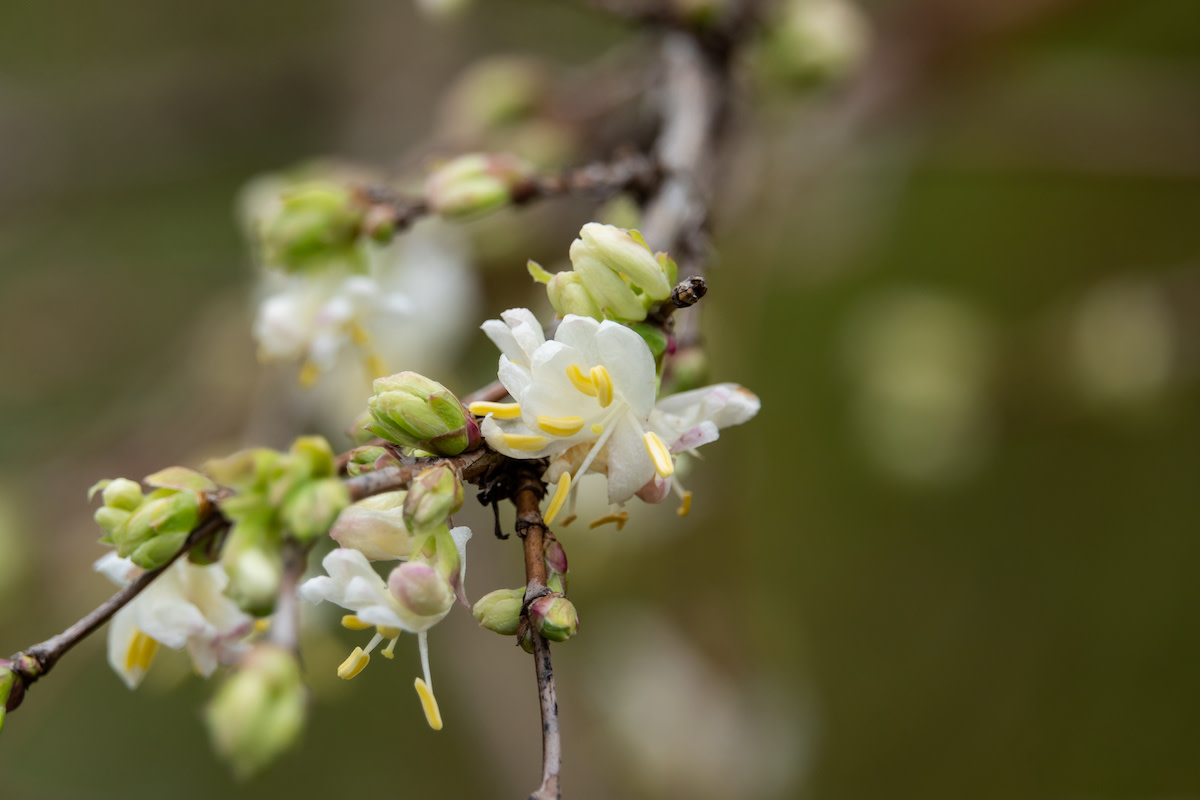Winter Honeysuckle: How to Care for the Honeysuckle Shrubs
Written by MasterClass
Last updated: Dec 22, 2021 • 3 min read
Winter honeysuckle plants are flowering shrubs that serve as a harbinger of spring due to their early bloom time in January. Their showy and fragrant flowers can sweeten up a cottage garden, backyard, or lawn, but you should also take their invasive properties into account.
Learn From the Best
What Is Winter Honeysuckle?
Winter honeysuckle plants (Lonicera fragrantissima) are semi-evergreen deciduous shrubs known for their blue-green leaves, creamy white flowers, and red berries. Their bloom time begins in mid to late winter rather than early spring. Other common names include January jasmine, sweet breath of spring, and winter-flowering honeysuckle. Winter honeysuckle plants differ from certain other honeysuckle plant species in their tendency to grow as shrubs instead of vines. For instance, Japanese honeysuckle (Lonicera japonica)—another member of the Caprifoliaceae family—is a far more suitable candidate to climb a trellis than winter honeysuckle.
Is Winter Honeysuckle an Invasive Plant?
Winter honeysuckle plants love to spread out their roots. When you keep these flowering shrubs as background plants far from the rest of your flowers, shrubs, and so on, they can be beautiful, fast-growing additions to your garden. But as native plants to forest understories and other natural wildlands, they can also become quite invasive because of their drive to take up territory and ensure their survival.
If you live in North America, your state or territory may have rules in place that advise against or prohibit you from planting these eager-to-spread plants. This is because hummingbirds and other animals can drop winter honeysuckle seeds throughout the neighboring landscape. This causes new shrubs to flourish and crowd out the roots of other gardeners’ plants on both public and private property without the owners’ consent.
7 Winter Honeysuckle Care Tips
You should care for your winter honeysuckle with vigilance and tenderness. Here are seven suggestions to ensure the plants grow as well as they can:
- 1. Assess the risk. Check local ordinances to see if you can plant winter honeysuckle in the first place. Once you get the all-clear, make sure the shrub borders a fairly open area of your own garden to keep it from crowding out other roots. Be sure to keep a steady eye on how the rest of your garden behaves—if you notice other plants looking like they’re struggling near the honeysuckle, check to see if the root systems have become tangled.
- 2. Balance light and shade. Shoot for somewhere between full sun and partial shade to ensure your winter honeysuckle plants grow to their full potential. Err on the side of shade if you have to choose between the two, but a balance is preferable.
- 3. Meet climate needs. These fragrant honeysuckle plants may have “winter” in their name, but they survive better in some regions’ winters than others. These plants do best in USDA Hardiness Zones 4–8, meaning they thrive in areas where winter temperatures range between negative thirty and positive twenty degrees Fahrenheit.
- 4. Plant in the right soil. Aim for a moderately alkaline soil pH of around 5.5–8.0 to ensure these plants bloom beautifully from late winter through late spring. Make sure you use a loamy soil, too.
- 5. Prune and trim when appropriate. This honeysuckle tends to spread out bountifully, so you should be ready to prune and trim its foliage back when the situation calls for it. You can cut the plants pretty close to the ground before the first frost of the year if you want them to start almost completely from scratch each year. Use some of these stem cuttings for additional propagation if you see fit.
- 6. Take care of pests and diseases. Winter honeysuckle shrubs face the same aphids and other insect assailants as other plants, as well as some of the same diseases like powdery mildew. By keeping your plants well-watered in a good loam soil, you can avoid many of these problems. Should issues surface anyway, use an insecticide to deal with pests and remove any diseased plant areas to prevent ailments from spreading.
- 7. Water moderately. This plant type is drought-tolerant, so it can withstand dry soil for longer than other shrubs and flowers in your garden. You should still try to keep the soil moist without making it muddy, especially for new growths. Ensure it can drain well to prevent rotting the roots.
Learn More
Grow your own garden with Ron Finley, the self-described "Gangster Gardener." Get the MasterClass Annual Membership and learn how to cultivate fresh herbs and vegetables, keep your house plants alive, and use compost to make your community—and the world—a better place.
